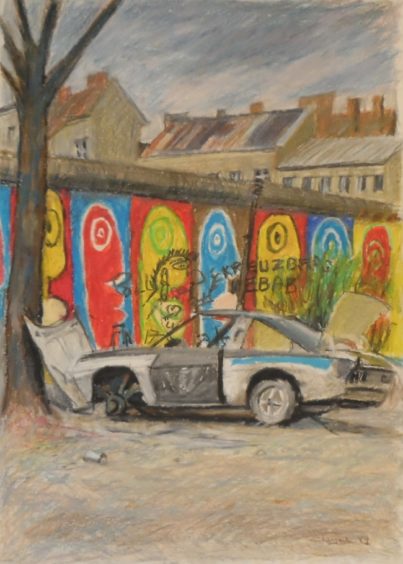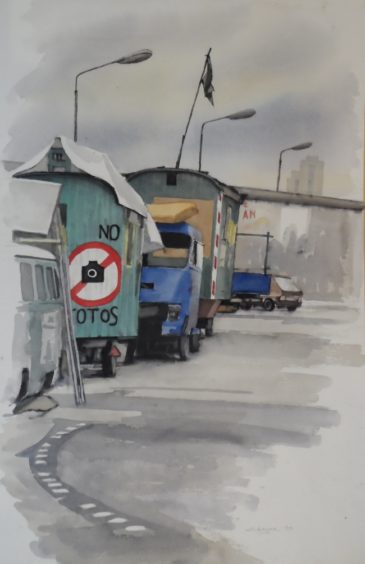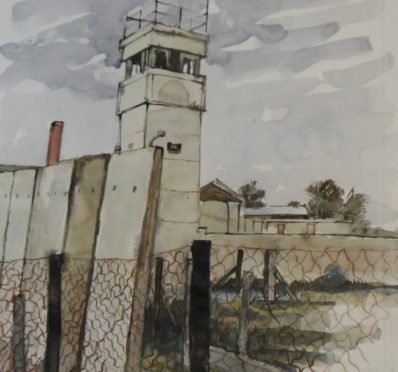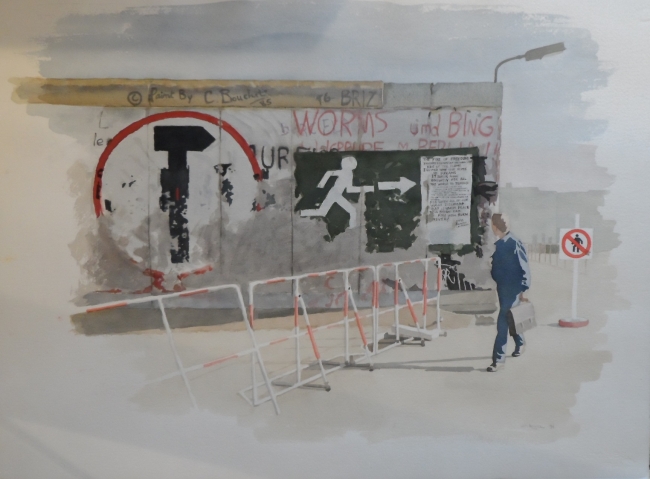Stepping out into a no-man’s land in which they would once have faced being shot, the people of Berlin rejoiced.
It was one of the defining images in the collapse of the Eastern Bloc; scores of people from both sides clambering through the Berlin Wall on November 9, 1989.
Now, 30 years later, an art exhibition at the Rendezvous Gallery in Aberdeen highlights the striking works of somebody who was in Berlin when the structure was torn down.
North-east man Sandy Cheyne arrived in West Berlin in 1982 to teach art at the Havel School for the children of British servicemen in the city.
He found himself recording an incerdible moment in history with his sketchbook during what he described as “the most exciting period of my life”.
Through the images he captured, he has chronicled the fashion in which Berlin was transformed from an “island city”, surrounded by a totalitarian state, to a bustling political, social, cultural and financial centre at the very heart of Europe.
Mr Cheyne’s exhibition depicts the seismic change which occurred as he and wife, Elke, lived in Berlin for 14 years after the re-unification of the city.
In 1989, a series of revolutions in nearby Eastern Bloc countries—Poland and Hungary in particular—caused a chain reaction in East Germany that ultimately resulted in the destruction of the Wall.

After several weeks of civil unrest, the East German government announced on November 9, 1989, that all GDR citizens could visit West Germany and West Berlin.
Crowds of East Germans crossed and climbed onto the wall and were joined by West Germans on the other side in a celebratory atmosphere.
In the next few weeks, euphoric people and souvenir hunters chipped away parts of the structure and the Brandenburg Gate in the Berlin Wall was opened on December 22.
Mr Cheyne, who now lives in Newtonhill, was among the crowds on November 9 and has never forgotten the scenes he witnessed.
He said: “The mood in the city was something like a victory celebration, with car horns tooting, flags waving and the streets in the city crammed with the East German car, the Trabant, affectionately known as the ‘Trabi’.
“The ‘Ossis’ (East Germans) were welcomed with open arms by the ‘Wessis’ (West Germans) and the pubs were doing a roaring trade with Ossis and Wessis meeting, buying each other drinks and telling their stories. 
“Great excitement filled the streets. The Berlin Wall had been opened up and East Berliners were allowed free access to West Berlin.”
He added: “At 9am on November 10, I took my motor bike to Checkpoint Charlie where a section of the wall had been removed.
“The streets were packed with sightseers and the Kurfuerstendamm – West Berlin’s main street – was closed to traffic.
“Never in my life have I witnessed a celebration to compare to that.”

The formal demolition process officially began on June 13, 1990, and was completed in November 1991.
In July 1988, 16 months before it came down, Bruce Springsteen and the E-Street Band, played Rocking the Wall, a live concert in East Berlin, which was attended by 300,000 in person and broadcast on television.
The American musician spoke to the crowd in German, saying: “I’m not here for or against any government. I’ve come to play rock ‘n’ roll for you in the hope that, one day, all the barriers will be torn down”.
Mr Cheyne’s exhibition will be on show at the gallery until November 23. Further information is available at www.rendezvous-gallery.co.uk.

